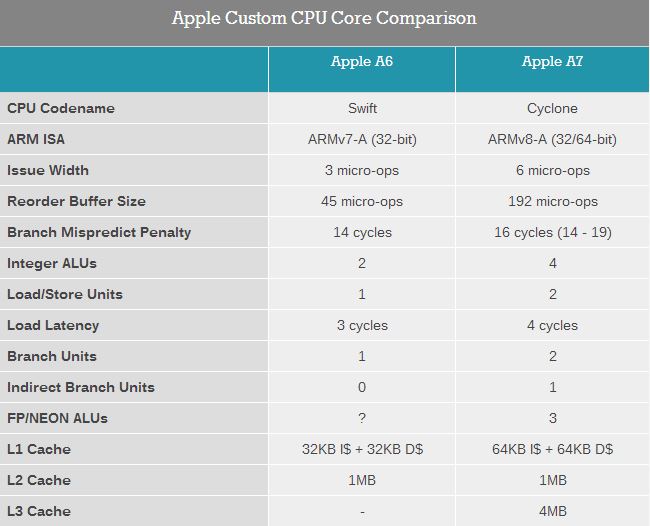Prezentand iPhone 5S si noul sau chip A7, compania Apple a afirmat ca arhitectura chip-ului sau este asemanatoare cu cea a chip-urilor concepute pentru desktop-uri si desi atunci putini credeau acest lucru, afirmatia se dovedeste a fi adevarate. In urma unei analize detaliate a celor de la Anandtech, analistii publicatiei au ajuns la concluzia ca noul chip al celor de la Apple are anumite componente ale arhitecturii care sunt similare arhitecturilor utilizate de catre Intel pentru chip-urile dedicate desktop-urilor.
Apple didn’t build a Krait/Silvermont competitor, it built something much closer to Intel’s big cores. At the launch of the iPhone 5s, Apple referred to the A7 as being “desktop class” – it turns out that wasn’t an exaggeration.
Procesorul chip-ului A7 poate procesa cate 6 instructiuni pentru fiecare ciclu de incarcare, procesoarele Intel Ivy Bridge avand exact aceeasi performanta, ea fiind dubla fata de cea inregistrata in chip-ul A6. Mai mult decat atat, chip-ul A7 are 192 instruction buffers, exact cat are si un chip Intel Haswell, cifra fiind de peset 4 ori mai mare decat cea inregistrata pentru chip-ul A6. Practic Apple a conceput un chip extrem de avansat care poate evolua extrem de mult in ceea ce priveste performantele, iar tot ceea ce ramane de facut este ca Apple sa lanseze chip-ul A8.






















